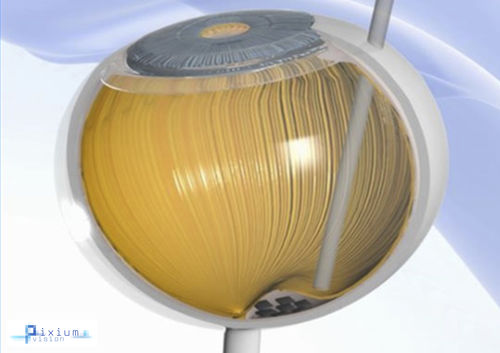The PRIMA System is intended to partially replace the normal physiological function of the eye’s photoreceptor cells by electrically stimulating the nerve cells of the inner retina, which then transmit the visual information to the brain via the optic nerve.
The PRIMA System aims to elicit functional artificial, or bionic, vision in the form of light perception replacing partially the natural central vision loss. The PRIMA System is composed of three main elements: Wireless retinal implant, pair of glasses with a camera and digital projector, and a pocket processor.
Configured to be minimally invasive with its miniaturized design
The PRIMA implant used in the feasibility clinical study is of 2x2mm size and 30 microns thick (third the size of a human hair). It is a miniaturized passive and totally wireless sub-retinal implant that acts like a tiny solar panel that is powered by pulsed near infrared light through a miniaturized digital projector integrated in the pair of glasses worn by the implanted subject. PRIMA implant’s small size and wireless design enables minimally invasive surgery, which could be performed under local or general anesthesia.
Aiming to improve the perceptual resolution and designed for a physiological signal processing
in addition to minimally invasive surgery, the aim of the PRIMA System design was also to potentially improve the resolution of the prosthetic artificial visual perception by implanting directly at the level of the degenerated photoreceptors. the sub-retinal implantation leverages a physiological network that is still functioning




